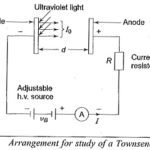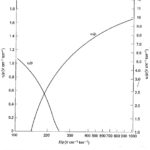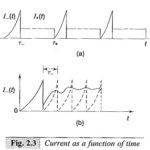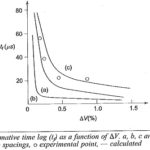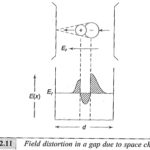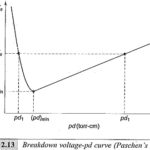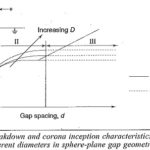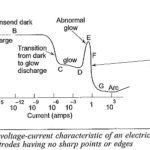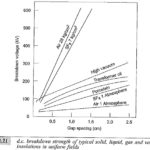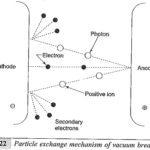Conduction and Breakdown in Gases Articles:
Collision Process in Gases: An electrical discharge is normally created from unionised gas by Collision Process in Gases. These processes are mainly gas processes which occur due to the collision between the charged particles and gas atoms or molecules. These are of … (Read More)
Ionization Processes: A gas in its normal state is almost a perfect insulator. However, when a high voltage is applied between the two electrodes immersed in a gaseous medium, the gas becomes a conductor and an electrical breakdown occurs.The processes that … (Read More)
Townsend Current Growth Equation: Referring to Fig. 2.1 shows the Townsend Current Growth Equation. let us assume that n0 electrons are emitted from the cathode. When one electron collides with a neutral particle, a positive ion and an electron are formed. This is … (Read More)
Breakdown in Electronegative Gases: It has been recognized that one process that gives high breakdown strength to a gas is the electron attachment in which free electrons get attached to neutral atoms or molecules to form negative ions. Since negative ions … (Read More)
Experimental Arrangement to Measure Ionization Coefficients α and γ: The Experimental Arrangement to Measure Ionization Coefficients is shown in Fig. 2.2. The electrode system consists of two uniform field electrodes. The high voltage electrode is connected to a variable high voltage d.c. … (Read More)
Formative Time Lag: Formative Time Lag – In the previous section, the mechanism of spark breakdown is considered as a function of ionization processes under uniform field conditions. But in practical engineering designs, the breakdown due to rapidly changing voltages or … (Read More)
Streamer Theory of Breakdown in Gases: Townsend mechanism when applied to breakdown at atmospheric pressure was found to have certain drawbacks. Firstly, according to the Townsend theory, current growth occurs as a result of ionization processes only. But in practice, breakdown … (Read More)
Paschen Breakdown | Paschen’s Law | Paschen curve: It has been shown earlier (refer Sec. 2.6) that the Paschen Breakdown criterion in gases is given as where the coefficients α and γ are functions of E/p, i.e Substituting for E have in the expressions for α … (Read More)
Corona Discharges: If the electric field is uniform, a gradual increase in voltage across a gap produces a breakdown of the gap in the form of a spark without any preliminary discharges. On the other hand, if the field is non-uniform, … (Read More)
Breakdown in Non Uniform Fields: In Breakdown in Non Uniform Fields, such as coaxial cylinders, point-plane and sphere-plane gaps, the applied field varies across the gap. Similarly, Townsend’s first ionization coefficient (α) also varies with the gap. Hence αd in Townsend’s criterion … (Read More)
Post Breakdown Phenomena in Gases: This is the Post Breakdown Phenomena in Gases which occurs after the actual breakdown has taken place and is of technical importance. Glow and arc discharges are the Post Breakdown Phenomena in Gases, and there are … (Read More)
Gases and Gas Mixtures for Insulation Purposes: Over the years, considerable amount of work has been done to adopt a specific gas for practical use. Before adopting a particular gas or gas mixtures for a practical purpose, it is useful to … (Read More)
Vacuum Insulation: The idea of using Vacuum Insulation purposes is very old. According to the Townsend theory, the growth of current in a gap depends on the drift of the charged particles. In the absence of any such particles, as in … (Read More)
Vacuum Breakdown: In the Townsend type of discharge in a gas described earlier, electrons get multiplied due to various ionization processes and an electron avalanche is formed. In a high Vacuum Breakdown, even if the electrodes are separated by, say, a … (Read More)
